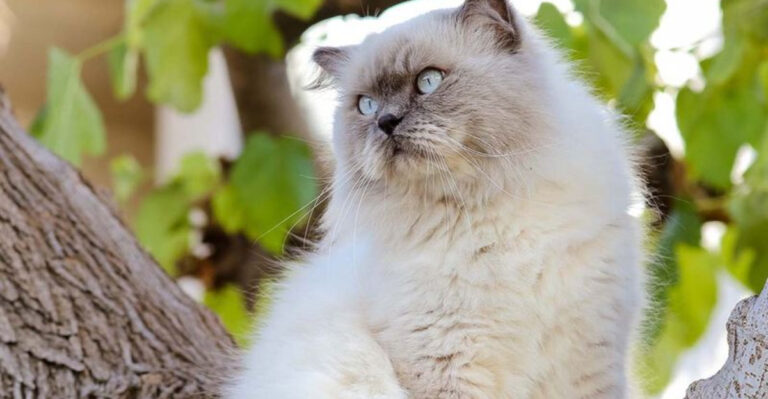7 Mimic Bird Species You Should Know
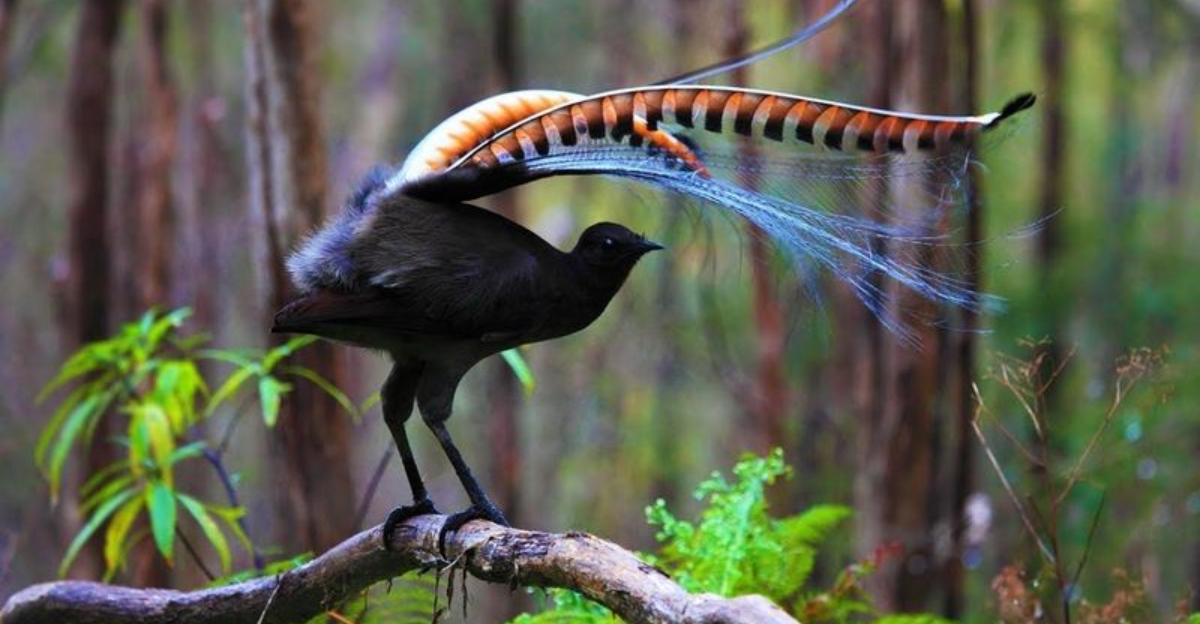
Birds have always fascinated humans with their ability to soar the skies, but some of them have another talent that captivates us even more – mimicry.
Mimic birds are masters at imitating sounds from their environment, from other bird calls to human-made noises.
These avian impressionists use their skills for various purposes, from attracting mates to warding off predators. Here, we’ll explore remarkable mimic bird species that you should definitely know about.
1. Lyrebird
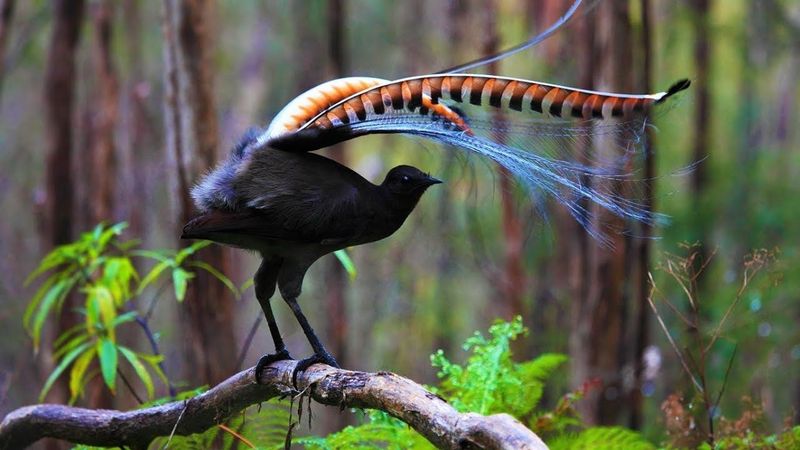
The lyrebird, native to Australia, is renowned for its extraordinary ability to mimic natural and artificial sounds from its environment.
This avian virtuoso can replicate the calls of over 20 different bird species, alongside human-made noises like camera shutters and chainsaws. The lyrebird’s tail, resembling a lyre, adds to its allure as it performs a captivating dance during its mimicry sessions.
Found primarily in the rainforests of eastern Australia, the lyrebird plays a crucial role in the forest ecosystem.
By mimicking other species, it can both attract mates and deter predators, making its vocal talents essential for survival. The lyrebird’s performance is a spectacle, with the male bird often being the star performer.
Studying lyrebirds offers insights into the evolution of vocal learning. These birds challenge our understanding of avian communication and cognitive abilities, as they seamlessly blend their natural calls with other sounds.
For bird enthusiasts, the lyrebird embodies nature’s creativity and adaptability, inviting us to appreciate the artistry of sound in the animal kingdom.
2. Northern Mockingbird
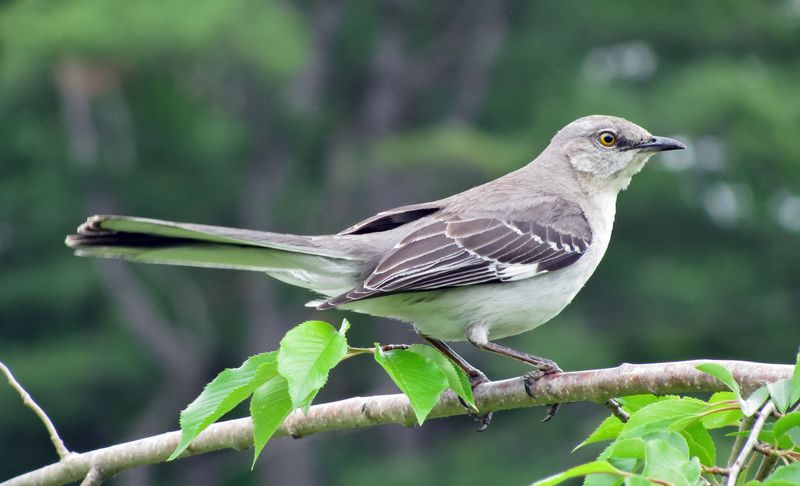
The northern mockingbird is a versatile songster found throughout North America. Known for its impressive repertoire, this bird can mimic up to 200 different sounds, including songs of other birds and even mechanical noises like car alarms. The northern mockingbird’s adaptability makes it a common sight in urban and suburban settings.
Its ability to mimic is not just for show. Male northern mockingbirds use their vocal talents to defend their territory and attract mates. The more varied their imitation, the more appealing they are to potential partners, making mimicry a key aspect of their courtship rituals.
From dawn to dusk, the northern mockingbird’s melodies enliven its surroundings. Its varied calls, often repeated in cycles, showcase its vocal prowess and adaptability. For those interested in birdwatching, spotting a northern mockingbird offers a delightful auditory experience, as these birds are rarely shy about displaying their diverse sound catalog.
3. African Grey Parrot
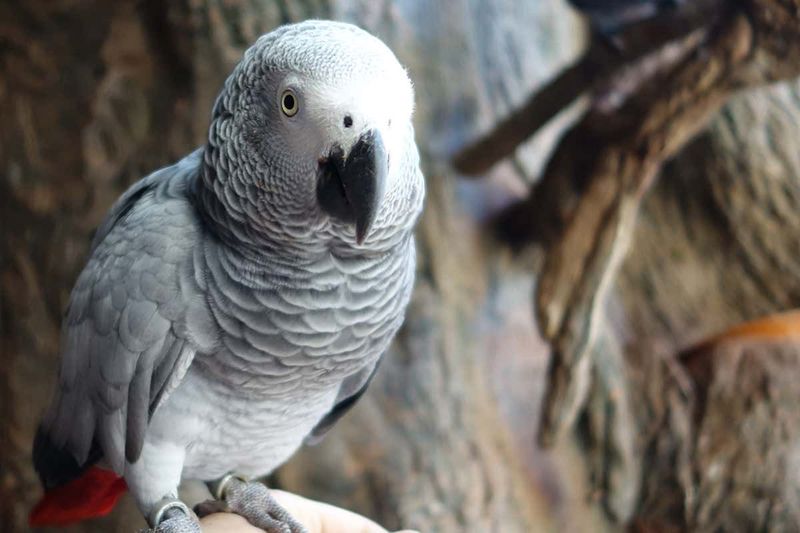
The African grey parrot is not only one of the most intelligent bird species but also a phenomenal mimic. Native to the rainforests of West and Central Africa, this parrot is highly regarded for its ability to imitate human speech with remarkable clarity. Owners often find their African greys repeating phrases or mimicking household sounds like doorbells and phone rings.
This parrot’s mimicry isn’t limited to mere entertainment. In the wild, African grey parrots use their vocal abilities to communicate with their flock, signaling danger or the discovery of food. Their advanced cognitive skills allow them to understand context, making their imitations more than just echoes.
As pets, African grey parrots require mental stimulation to engage their mimicry talents effectively. Their need for social interaction and complex environments challenges owners to keep them entertained. For those willing to invest the time, these parrots offer endless amusement and companionship, turning any home into a lively, interactive space.
4. Superb Fairywren
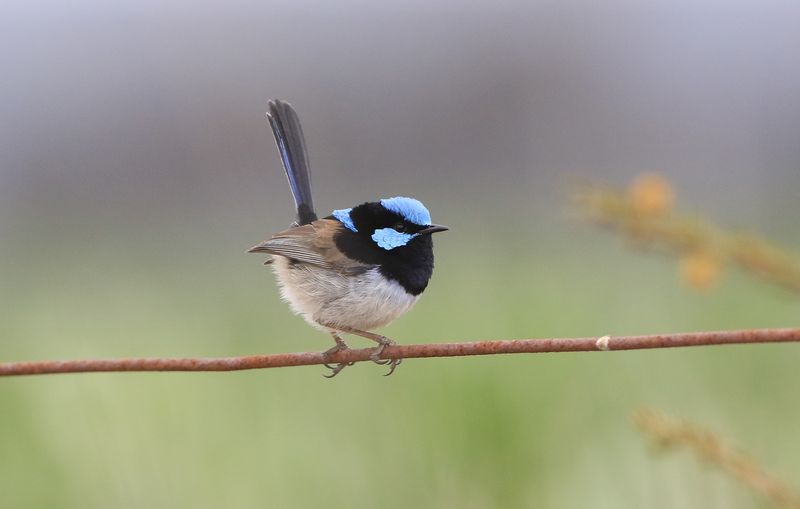
The superb fairywren, with its striking blue plumage, is a small but impressive mimic found in Australia. Known for its vibrant appearance and lively behavior, this bird can imitate the calls of other small birds and even some insects. The superb fairywren’s mimicry is an essential part of its social interactions within its group.
These birds often use mimicry to reinforce social bonds within their family groups, a behavior observed during their cooperative breeding activities. By mimicking, superb fairywrens coordinate their efforts in raising young, deterring intruders, and communicating threats.
Despite their small size, superb fairywrens play a significant role in their ecosystem. Their mimicry not only aids in survival but also enriches the acoustic environment of their habitats. Bird enthusiasts appreciate the superb fairywren not just for its beauty but for the complexity and ingenuity of its vocalizations. Observing these birds offers a glimpse into the sophisticated world of avian communication.
5. Hill Myna
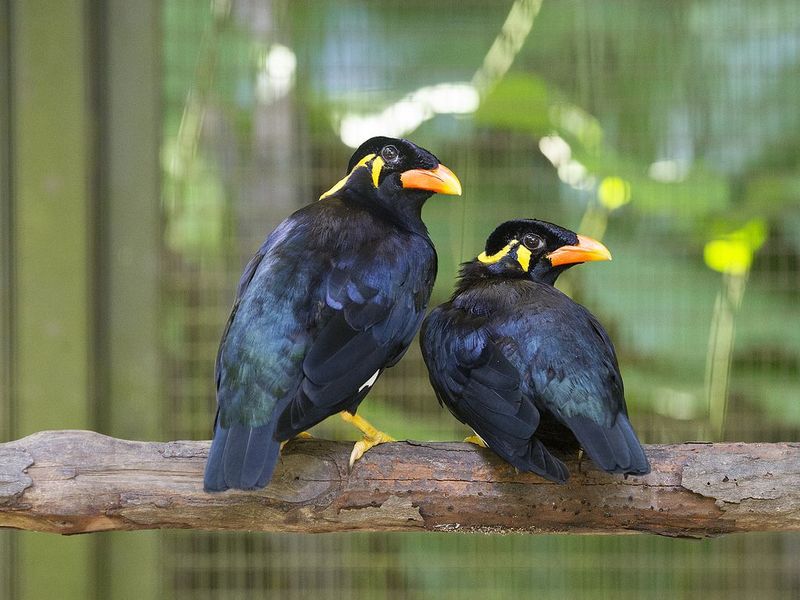
The hill myna, native to the forests of South and Southeast Asia, is celebrated for its uncanny ability to mimic human speech and other sounds. Unlike some mimics, the hill myna’s vocalizations are clear and resonate with a musical quality that delights listeners. Its mimicry often includes local bird calls and human sounds such as laughter or whistling.
The hill myna’s proficiency in mimicry is attributed to its social nature. In the wild, these birds live in small flocks, and mimicry helps maintain group cohesion and social hierarchy. Their ability to imitate is not just a party trick but a vital component of their social structure.
In captivity, hill mynas are popular pets, admired for their vocal abilities. Their engaging personalities and mimicry talents make them entertaining companions. Observing a hill myna in its natural habitat or as a pet offers a fascinating insight into the role of sound in avian life, highlighting how these birds use mimicry to navigate their complex social worlds.
6. Brown Thrasher
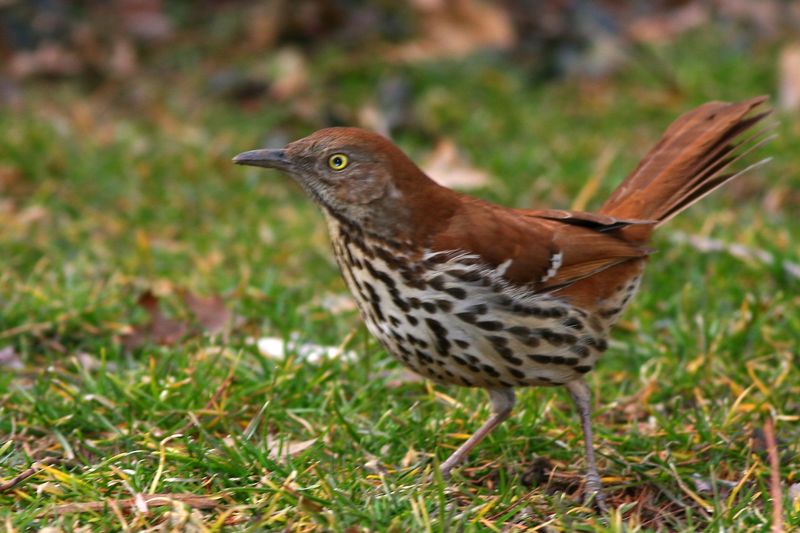
The brown thrasher, with its rich brown plumage and penetrating yellow eyes, is a masterful mimic found across North America. This bird is known for its extensive song library, reportedly mimicking over 1,000 different song types, including other birds and natural sounds like flowing water. The brown thrasher’s vocal versatility is a marvel of the avian world.
Primarily inhabiting dense underbrush and thickets, the brown thrasher uses its mimicry to establish territory and attract mates. Its songs, often delivered from a conspicuous perch, are a defining feature of its breeding season behavior. The ability to weave different sounds into a cohesive song makes the brown thrasher a standout among songbirds.
While the brown thrasher is not as well-known as other mimics, its contributions to the soundscape of its habitat are significant. For birdwatchers, hearing a brown thrasher’s varied repertoire is a testament to the complexity and beauty of nature’s soundscapes. Their presence enriches the auditory experience of any natural setting.
7. Starling
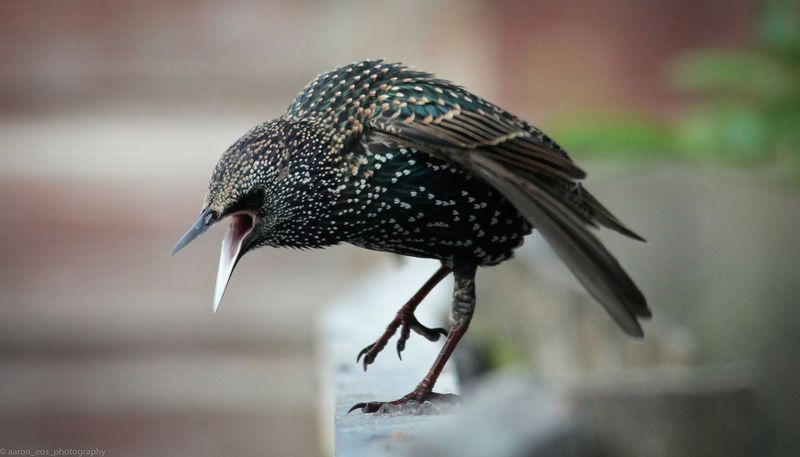
Starlings, particularly the European starling, are ubiquitous birds with a flair for mimicry. Despite their reputation as pests in some regions, these birds are remarkable for their ability to mimic a wide range of sounds, from other bird calls to human and mechanical noises like car alarms. Found in both urban and rural settings, starlings are adept at adapting their mimicry to suit their environments.
Starlings use their mimicry primarily during the breeding season, where males incorporate diverse sounds into their songs to attract mates. The complexity and variety of their vocalizations can indicate a male’s fitness and desirability as a partner.
In urban areas, starlings have become part of the city’s soundscape, blending natural and artificial noises into their songs. Their adaptability and vocal skills make them a fascinating subject for those interested in urban ecology and avian behavior. Observing starlings in action offers a unique perspective on how wildlife thrives amidst human development, utilizing mimicry as a tool for survival and communication.





